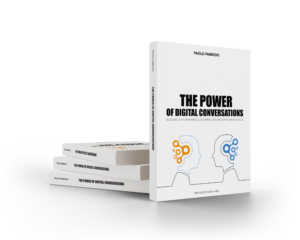If I asked you ‘who is the customer‘ what would you answer? Chances are you’d focus on an external entity, person or company, that purchase your products / services. There’s also another customer you’d better consider though within your organization: your colleague working in a different department. So whenever you’re providing support to colleagues, you’re delivering internal customer service. Strive to improve yours thanks to these two examples.
1° When customer service asks for support
You may find it counterintuitive, however that a typical situation. It takes place whenever your customer service agents ask for internal support to get the information they’ve been asked by the customer because they:
- Don’t have the specific knowledge – e.g. customer asks a technical financial-related question (e.g. can. I pay part of my debit now, then cover the balance next January?)
- Can’t get access to the information – due to the platform they’re using or for internal policy reasons (e.g. customer service agents are not allowed to get access to customer’s payments).
- Need to get up-skilled to take a stand towards the customer – e.g. they have to say a NO, but they’re much too afraid of customer’s reaction.
As for the above cases support agents are unable to answer the external customer, they need to ask for support to other departments such as Finance, IT, Marketing.
Q. How frequently your customer service team need to ask for internal support? Strive to improve internal communication processes / SLAs to deliver excellent customer experiences.
2° When other departments provide internal support
Here’s a recent first-hand experience, as I’ve just delivered training sessions for the HR team of an international organization. They’d asked my help them improve internal communication because that HR department manage high volumes of conversations via email, Live Chat and ticketing. Meaning colleagues from other departments asking them queries about:
- Pay-check details (taxes, fringe benefits calculation, expenses refunds)
- New hires (type of contract to be applied, documents needed)
- Law (fiscal and labour-related queries for new hires or dismissals)
I’ve had the chance to assess a large sample of their internal conversation to analyze and identify areas or improvement. Accordingly we’ve set up ad hoc guidelines for the HR team aimed at reducing average number of interaction and preventing wasteful conversations. Then, we’ve worked hard in the online laboratories making many exercises, simulating real-time conversations with the customer. That enabled training participants to quickly apply and enjoy dramatic improvements in just a few weeks – in fact that was the part of these sessions they’ve liked the most. 😉

Now they just need to keep the bar high, consolidating such great results also the next months.
How about your conversations?
When internal customer service is being underrated it leads to poor customer experiences. As today’s customer is digital and demanding, timely and effective conversations become paramount. So now I’d like to hear from you: how is your internal customer service doing? What’s your current biggest challenge on this topic? Feel free to respond through this interactive video. Have great conversations!
Image credit: Unsplash.com







